NIL
Nick Saban braces for impact as Alabama legend teams up with Donald Trump to reshape college football’s NIL landscape
An Unforeseen Intersection of Sports and PoliticsA seismic shift is stirring in the world of college football, where new guidelines on athletes’ name, image, and likeness (NIL) are poised to transform the sport. The changes have ignited fresh debates, triggering strategic moves from figures known for their influence both on and off the field. Navigating […]
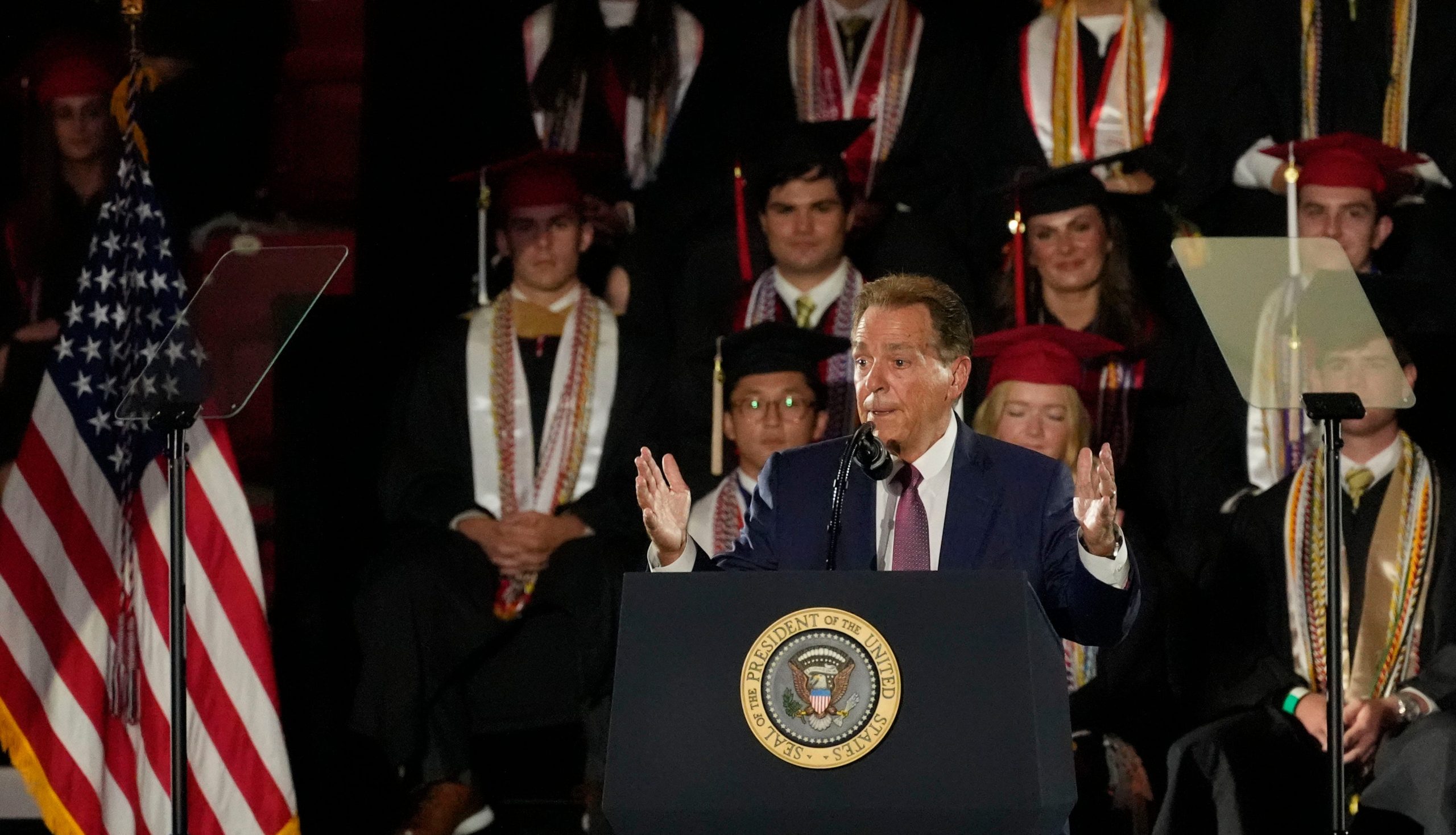
An Unforeseen Intersection of Sports and Politics
A seismic shift is stirring in the world of college football, where new guidelines on athletes’ name, image, and likeness (NIL) are poised to transform the sport. The changes have ignited fresh debates, triggering strategic moves from figures known for their influence both on and off the field.
Navigating the NIL Revolution
Recent moves signal that the landscape of college athletics is entering uncharted territory. The evolving regulations on NIL, which allow college players to profit from their personal brands, have introduced an element of unpredictability. As the rules are refined, stakeholders are bracing for potential upheavals that could redefine recruiting, competition, and even academic alignment, prompting seasoned figures to act swiftly.
Strategic Calculations on the Gridiron
Among those preparing for change is one of college football’s most prominent strategists. With an established reputation for both football mastery and astute decision-making, this key figure is leveraging longstanding relationships with governmental circles to help steer reform. His proactive stance suggests that meaningful adjustments to NIL policies may come with serious and lasting consequences, impacting teams, athletes, and the broader collegiate sports framework in ways that extend far beyond the field.
The Unlikely Alliance
In an unexpected twist, a high-profile political figure known for his polarizing persona has entered the conversation about college football’s future. This political involvement signifies a merging of sports and high-level governance, hinting that future regulations could carry the imprint of strategic political priorities. The collaboration evokes echoes of past transformative eras, where proactive leadership and political backing converged to reshape important cultural institutions. The shared ambition is clear: to instill greater consistency and control in an arena that has long operated under its own unpredictable rules.
Broader Implications and Reflective Takeaways
The unfolding scenario is a reminder that college sports, much like other cultural and economic sectors, are not immune to the currents of political change. The upcoming reforms, driven by an alliance between sports leadership and political influence, underscore the interconnectedness of power, policy, and passion that defines modern collegiate athletics. As the community stands by to witness these changes, the significant takeaway is that navigating the future will require not only strategic foresight but also a balanced integration of athletic tradition with contemporary regulatory practices.
A Thoughtful Look Ahead
In the end, the dialogue on NIL reforms transcends mere regulatory adjustments—it invites a broader discussion on the nature of fairness, opportunity, and the evolving role of sports within society. The convergence of influential voices from both football and political spheres suggests a transformative period ahead, one that will likely reshape college football into a more regulated yet dynamic arena. The long-term impact of these decisions reminds us that progress often comes with challenges, urging all stakeholders to prepare thoughtfully for the future.
NIL
NIL money is a win-win-win for basketball
The pleasant side effect of the mad dash for cash is ameliorating the pro basketball development pipeline, one long prone to premature harvesting and eating its young. Instead of fleeing for an uncertain NBA future, talented college players possess the option to run it back on campus, where they can get paid, improve their craft, […]
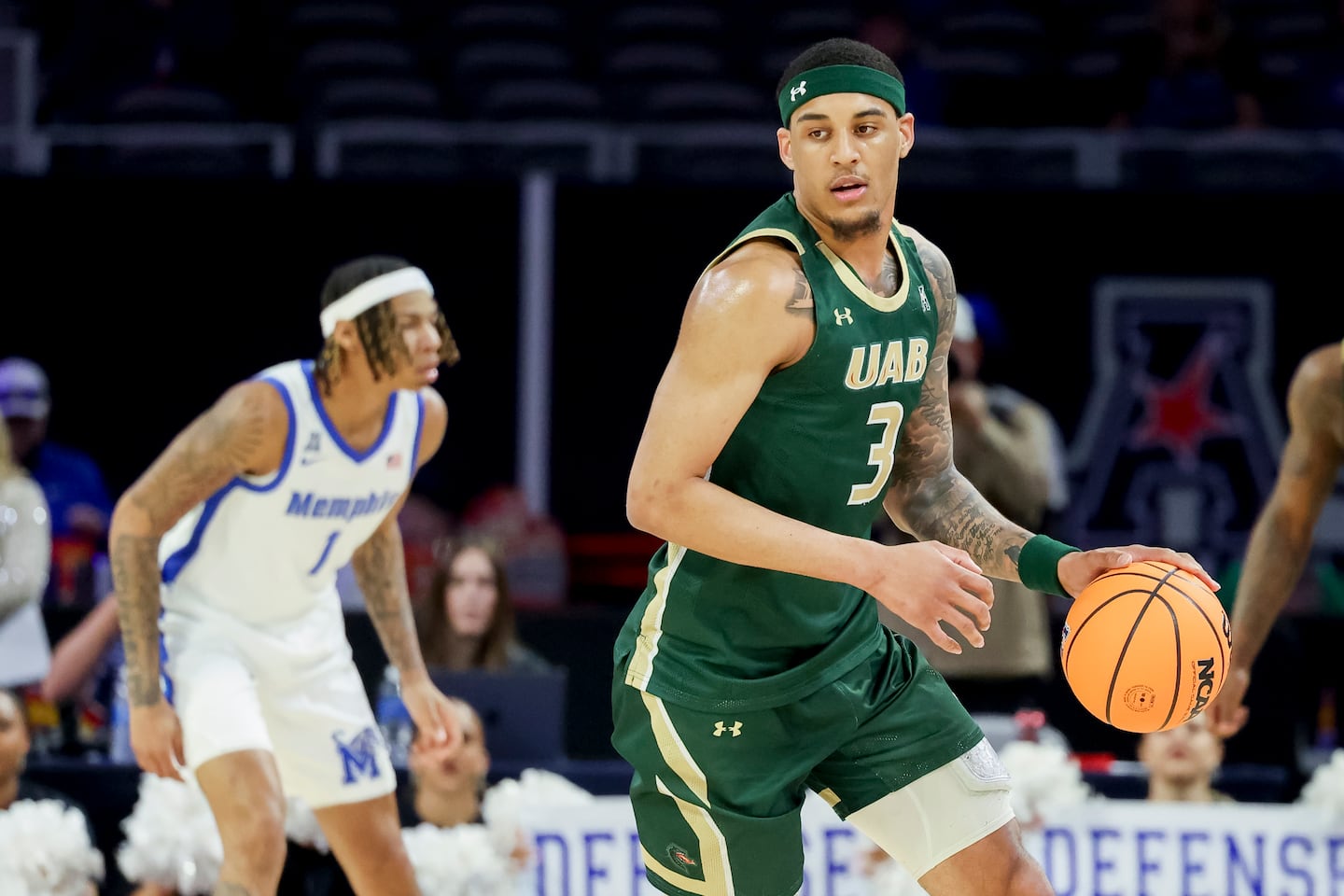
The pleasant side effect of the mad dash for cash is ameliorating the pro basketball development pipeline, one long prone to premature harvesting and eating its young. Instead of fleeing for an uncertain NBA future, talented college players possess the option to run it back on campus, where they can get paid, improve their craft, and show up at the NBA’s doorstep more prepared.
It’s a win, win, win scenario.
The top of NBA drafts are still likely to be littered with one-and-done players like sure-shot No. 1 pick Cooper Flagg of Duke, the pride of Maine. But for players on the first-round fence or the outskirts of lottery land, there’s a choice. That played out last Wednesday, the deadline for players to opt out of the draft and maintain college eligibility.
There were 106 early-entry candidates (including international players) for the 2025 draft, to be held June 25-26. That was the lowest in a decade (2015 had 91) and down from 195 last year.
According to the NBA, 50 players — all but two of whom played college basketball last season — withdrew by the May 28 deadline. (The NBA’s deadline to withdraw as draft eligible is June 15.)
That potential sea change might not be great for the Celtics, who possess picks No. 28 (first round) and 32 (second), but it’s good for a basketball ecosystem ravaged by the vicious cycle of ill-prepared, inchoate, and immature players flooding the draft pool each year and leaving holes in college basketball rosters.
“This year’s draft class more than any ever has been affected by the NIL and affected by the new pay-for-play,” Celtics president of basketball operations Brad Stevens told NBC Sports Boston, “but I think that this draft more than any other will probably be affected by that, as far as the backend of the draft and even into the late first [round] people will have really hard decisions to make.
“Do I come to the NBA and make this much money, slotted for this many years? Or do I take a huge payday from some school? And that’s the world we live in.”
It’s a world where college players don’t have to choose between getting compensated for playing or prioritizing improvement.
Assuming the settlement in the landmark House vs. NCAA case is approved, power conference schools will be able to (officially) pay athletes, with each allotted approximately $20.5 million. The bulk of that will go to football and basketball.
Coupled with the transfer portal, college players enjoy unfettered free agency thanks to NIL. The NCAA and its president, former Massachusetts governor Charlie Baker, detest that depiction of the system, but that’s effectively what it is — a free market.
Instead of being assigned to an NBA locale and slotted into a rookie contract, players can spark an NIL bidding war and choose their destination. Call it college basketball capitalism.
Rookie salaries prescribed by the NBA collective bargaining agreement get lower with each pick. Flagg will earn about $11.5 million in his rookie season, but the 17th pick is set to make $3.5 million — a number sought-after college players can approach in the NIL market.
Every pick after the 20th selection is projected to make less than $3 million as a rookie, and only the first two years of rookie salaries are guaranteed for first-round picks. That’s why some prominent prospects extended their school days.
Among the high-profile college basketball returnees:
⋅ Alex Condon, the fourth-leading scorer for national champion Florida.
⋅ Associated Press second-team All-American PJ Haggerty, who transferred to Kansas State.
⋅ Houston point guard Milos Uzan, who helped the Cougars reach the national title game.
⋅ Highly recruited class of 2024 guard Boogie Fland, who transferred to Florida.
⋅ Auburn freshman sensation Tahaad Pettiford.
⋅ All-Big 12 first-team forward Darrion Williams, who transferred from Texas Tech to North Carolina State.
⋅ University of Kentucky leading scorer Otega Oweh.
⋅ Labaron Philon, an SEC All-Freshman team selection.
⋅ All-Big Ten center Nate Bittle of Oregon.

You don’t have to be Dick Vitale to know those names if you’re passionate about college hoops.
The apotheosis of this NIL-fueled trend is Michigan big man Yaxel Lendeborg. One of the most sought-after transfers in the country, Lendeborg landed in Ann Arbor from the University of Alabama at Birmingham. A versatile forward, Lendeborg piqued the interest of NBA teams, drawing first-round buzz.
Last season, he joined Larry Bird (heard of him?) as the only Division 1 college players ever to compile 600 points, 400 rebounds, and 150 assists in a season.
When Lendeborg pulled out of the draft, he offered a statement thanking Michigan coach Dusty May for his patience with the process and “the Champions Circle collective for making this opportunity possible.”
That’s the NIL collective bankrolling University of Michigan athletes. Michigan’s NIL money was the siren song luring Lendeborg back to school.
Some will find that unsavory, but this is the new reality. The presence of Lendeborg and his brethren in the college game represent a rising tide that should lift all basketball boats.
That’s the silver lining of the NIL golden goose.
Christopher L. Gasper is a Globe columnist. He can be reached at christopher.gasper@globe.com. Follow him @cgasper and on Instagram @cgaspersports.
NIL
Kentucky named one of college basketball's biggest transfer portal winners by CBS Sports
It was a very, very good offseason for Mark Pope and the Kentucky Wildcats, retaining almost all of the team’s production with remaining eligibility, signing three top-40 high school recruits and adding one of the top transfer portal classes in the country. With 14 talented pieces on the roster going into 2025-26, there aren’t many […]
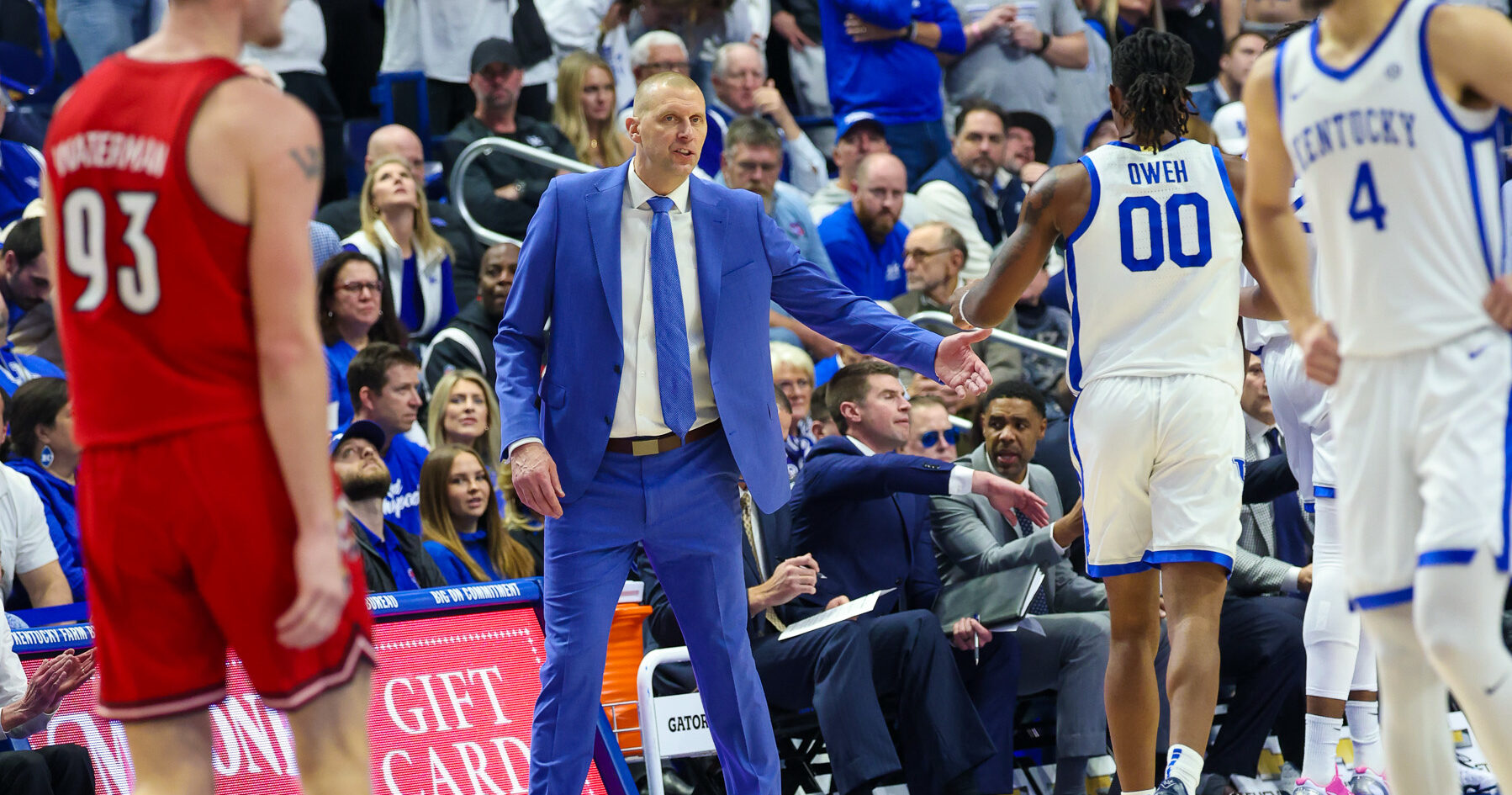


It was a very, very good offseason for Mark Pope and the Kentucky Wildcats, retaining almost all of the team’s production with remaining eligibility, signing three top-40 high school recruits and adding one of the top transfer portal classes in the country. With 14 talented pieces on the roster going into 2025-26, there aren’t many groups better from top to bottom when you combine ability, versatility, size, experience and depth.
In fact, there may not have been a bigger winner of the offseason than Kentucky — at least if you look at the program’s five top-60 portal additions, as David Cobb of CBS Sports believes.
In a list of the biggest winners of the 2025 portal cycle, the Wildcats sit atop the list put together by CBS Sports, a class that included six total newcomers and just two departures in Kerr Kriisa and Travis Perry.
“Kentucky went shopping in the luxury aisle and came away with some high-end portal additions to reinforce a roster that is losing five double-figure scorers to due to the expiration of eligibility,” Cobb said of the Cats. “Five of the additions are ranked among the top-60 transfers, headlined by No. 12 Jayden Quaintance. After shining as a shot-blocking freshman at Arizona State last season, Quaintance will combine with ex-Alabama forward Mo Dioubate to give the Wildcats a ferocious front court. Jaland Lowe (Pitt) will run the show at point guard after averaging 5.5 assists for the Panthers, while Denzel Aberdeen (Florida) and Kam Williams (Tulane) will add perimeter pop.
“Year 1 under coach Mark Pope showed proof of concept, and now the Wildcats are poised to keep building after a strong offseason.”
Not too shabby.
Among the other big winners: Louisville, St. John’s, UCLA, Michigan, Kansas State, Washington, UConn, Florida, San Diego State and George Washington.
The losers? North Carolina, Kansas, Arizona, UCF, Oregon State, Washington State, Memphis and Robert Morris.
Kentucky sits at No. 2 nationally in On3’s transfer portal team rankings, that rating system combining both additions and departures. Quaintance sits at No. 4 overall in the On3 Industry Ranking, followed by Lowe at No. 52, Dioubate at No. 61, Williams at No. 80 and Aberdeen at No. 89.
Read all of David Cobb’s analysis with CBS Sports here.
PORTAL / INTERNATIONAL COMMITS (7)
- Kam Williams – G – Tulane – 9.3 PPG, 4.5 RPG, 1.3 APG, 48.5% FG, 41.2% 3PT | Committed 3/28
- Jaland Lowe – G – Pittsburgh – 16.8 PPG, 5.5 APG, 4.2 RPG, 37.6% FG, 26.6% 3PT | Committed 4/5
- Mouhamed Dioubate – F – Alabama – 7.2 PPG, 5.9 RPG, 1.1 APG, 61.7% FG, 46.2% 3PT | Committed 4/7
- Jayden Quaintance – F – Arizona State – 9.4 PPG, 7.9 RPG, 2.6 BPG, 52.5 FG% | Committed 4/8
- Andrija Jelavic – C – Mega Basket — 10.8 PPG, 6.0 RPG, 1.4 APG, 50.3% FG, 32.3% 3PT | Committed 4/12
- Denzel Aberdeen – G – Florida – 7.7 PPG, 1.7 RPG, 41.8 FG%, 35 3PT% | Committed 4/21
- Reece Potter – C – Miami (OH) — 6.5 PPG, 3.7 RPG, 1.2 APG, 46.6 FG%, 36.7 3PT% | Committed 5/5
RETURNING PIECES / INCOMING FRESHMEN (7)
- Otega Oweh – G – Rising Senior – 16.2 PPG, 4.7 RPG, 1.7 APG, 49.2% FG, 35.5% 3PT | Going through NBA Draft process
- Brandon Garrison – C – Rising Junior – 5.9 PPG, 3.9 RPG, 1.9 APG, 50.9% | Confirmed return on 4/12
- Collin Chandler – C- Rising Sophomore – 2.7 PPG, 1.0 RPG, 0.7 APG, 36.1% FG, 34.7% 3PT | Confirmed return on 4/17
- Trent Noah – F – Rising Sophomore – 2.7 PPG, 1.9 RPG, 0.4 APG, 45.1% FG, 33.3% 3PT | Confirmed return on 4/18
- Malachi Moreno – C – Incoming Freshman – Great Crossing (Georgetown, KY)
- Jasper Johnson – SG – Incoming Freshman – Overtime Elite (Lexington, KY)
- Braydon Hawthorne – SF – Incoming Freshman – Huntington Prep (Huntington, WV)
NIL
Florida Atlantic University Athletics
Shelby Petik arrived to Florida Atlantic in August of 2024 following three seasons at the helm of Eastern Florida State College, where she most recently led the Titans to their best season in program history with 40 wins. She now joins an Owl program looking to build off a 40+ win season of their own that […]

Petik achieved 85 victories in three seasons as head coach of EFSC. In addition to their 40 wins in 2024, the Titans also made their first NJCAA Region 8 Championship appearance for the first time in program history and recorded their first nationwide ranking, coming in as high as No. 13.
Under Petik’s watch at Eastern Florida State, her student-athletes were named All-Conference 20 times, 10 each on the first and second team. Two were named NFCA All-South Region honorees and one was a Gold Glove recipient at center field.
The Titans were number one in the nation in sacrifice hits and top 10 nationally in fielding percentage. The team ranked top five in Region-8 for 14 of 15 team offensive statistical categories.
During this time, Petik also served as head coach for Siesta Key Phinz of the Florida Gulf Coast League.
Previously, Petik was an assistant coach at Presbyterian College, her alma mater, from 2018 to 2021, during which she provided hitting and outfield instruction while also coordinating travel, scheduling, and social media. Petik also served as an assistant for Furman University in 2017.
Petik graduated from Presbyterian in 2015 with a Bachelors of Science in Psychology. During her time, as a student-athlete, broke the program’s Division I era career records for doubles, home runs, RBIs, total bases, walks and games played. She received her Masters of Science in Collegiate Athletic Administration from Coker University in 2017.
NIL
Mississippi State baseball blasts Northeastern in NCAA tournament
TALLAHASSEE, Fla. — Mississippi State baseball won its battle against Northeastern’s ace pitcher to advance in the NCAA tournament’s Tallahassee Regional. The No. 3 seed Bulldogs (35-21) scored seven runs early to defeat the No. 2 Huskies 11-2 on May 30 at Dick Howser Stadium. It snapped a 27-game winning streak for Northeastern (48-10). MSU […]
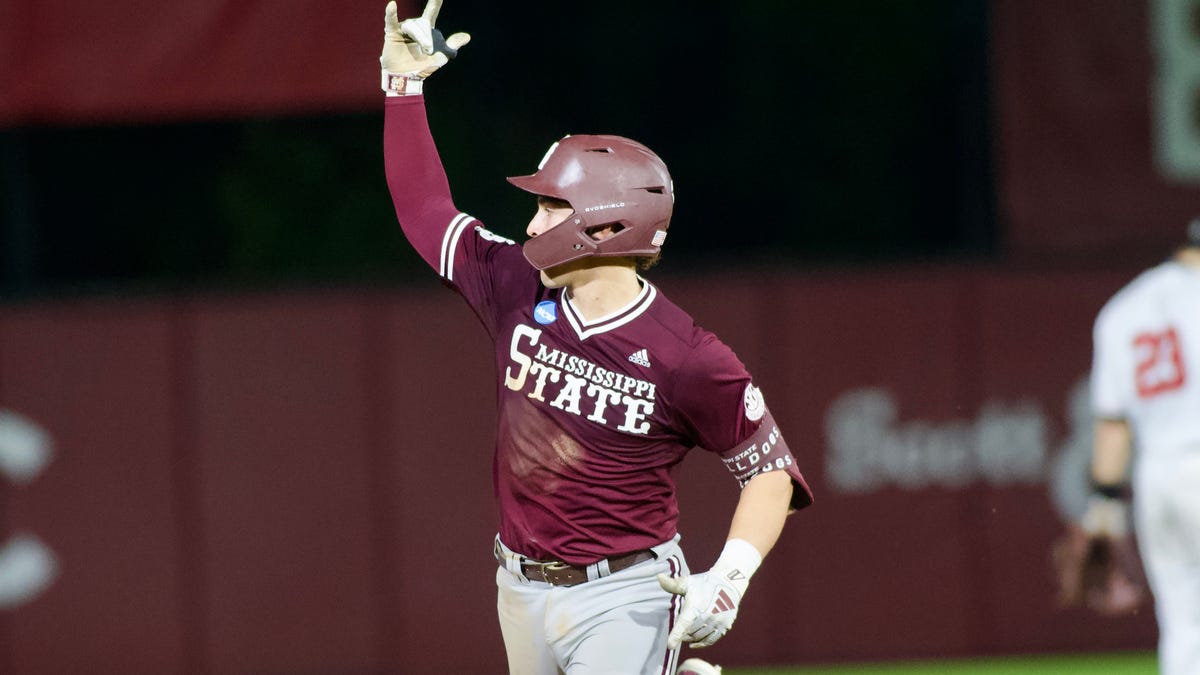
TALLAHASSEE, Fla. — Mississippi State baseball won its battle against Northeastern’s ace pitcher to advance in the NCAA tournament’s Tallahassee Regional.
The No. 3 seed Bulldogs (35-21) scored seven runs early to defeat the No. 2 Huskies 11-2 on May 30 at Dick Howser Stadium. It snapped a 27-game winning streak for Northeastern (48-10).
MSU is now 10-2 under interim coach Justin Parker.
Mississippi State will play No. 1 Florida State (39-14) on May 31 (5 p.m. CT, ESPN2). Northeastern will play in the early game against No. 4 Bethune-Cookman (37-22) in an elimination game.
Mississippi State scored on Northeastern’s ace early
Northeastern ace pitcher Will Jones had impressive stats entering the game with a 1.82 ERA and 11-0 record in 14 starts. He hadn’t allowed a single run in any of his previous three starts.
MSU chased him out of the game in the third inning as it raced to a 7-2 lead. It had big swings with two outs.
In the second inning, second baseman Gatlin Sanders smacked a single that drove in two runs. Then in the third inning, MSU scored three of its four runs with two outs. Catcher Joe Powell had the big swing with a two-run home run, MSU’s 98th to break the program’s single-season record.
Jones departed from the game immediately after Powell’s home run.
Mississippi State got a strong performance from surprise starter Ben Davis
The Bulldogs made a surprising decision at pitcher, starting Ben Davis. Davis has mostly been used out of the bullpen this season with only three starts, the most recent one in March.
The sophomore allowed two runs, one unearned, while pitching five innings with three strikeouts and two walks. His 87 pitches were the most he’s thrown all season. All five of his hits conceded were singles, too.
Freshman Ryan McPherson pitched four scoreless innings after replacing Davis.
Sawyer Reeves exited game with an injury
MSU shortstop Sawyer Reeves exited the game with an injury and didn’t return.
It’s unclear exactly how he was injured. Reeves was taking warmups after the top of the third inning when the training staff and Parker came out to evaluate him. He was pulled from the game before the inning began.
Freshman Lukas Buckner took Reeves’ spot in the lineup.
Reeves, who bats second in the MSU lineup, was 1-for-2 with a single and a run before exiting.
Sam Sklar is the Mississippi State beat reporter for the Clarion Ledger. Email him at ssklar@gannett.com and follow him on X @sklarsam_.
NIL
‘Hypocrisy and Disconnect’ — Ex-Michigan TE Opens Up About NIL’s Biggest Pain Points
When former Michigan TE Jake Butt speaks, the college football world listens. And that is not because he was one of the best tight ends the Wolverines have produced. Butt, a two-time All-American and Big Ten Tight End of the Year, went on to play at the NFL with Denver before turning to the analyst […]

When former Michigan TE Jake Butt speaks, the college football world listens. And that is not because he was one of the best tight ends the Wolverines have produced. Butt, a two-time All-American and Big Ten Tight End of the Year, went on to play at the NFL with Denver before turning to the analyst seat at Big Ten Network.
Nowadays, Butt’s got the platform, the credentials, and a front-row seat to the chaos of the NCAA dealing with NIL legislation. The NIL era has changed college football. And while it is sweet for the players cashing in, it has been messy for the NCAA trying to keep up. And according to Butt, the NCAA’s grip on the game is slipping.

“NCAA’s Inability to Enforce” — Jake Butt Exposes NIL Dilemma Amidst Power Four’s New Proposal
Jake Butt was recently on an episode of “Next Up” podcast with Adam Breneman, and he didn’t mince his words. What’s the biggest pain point in this whole NIL saga? As Butt puts it, “The hypocrisy and the disconnect in how the rules get enforced.” And this is not coming from someone on the sidelines.
Butt has been on the field and has been through the maze. As he laid it out, there was always money moving behind the curtain in college football, even long before NIL deals were above board. However, now the NCAA’s acting like a traffic cop in the middle of a Formula One race. And no doubt, that comes with the fear of being sued.
“They’re just scared to death. Because they have been getting sued, and they’re basically paralyzed,” Butt claimed.
Currently, the Power Four conferences are proposing a new College Sports Commission to take over the NIL side of the NCAA. The commission will introduce a revenue-sharing cap and have a committee in charge of policing NIL deals for “fair market value.”
Now that sounds good on paper, but the schools that sign this can’t sue the new commission. And if they don’t like the rules, well, too bad, or the school can step out.
And that is where Jake Butt’s frustration cuts deepest. The NCAA, in his eyes, has already lost control.
“I don’t know what they can do—seriously,” he admitted. Looks like even the Power Four proposal is not convincing enough. Butt seems to think that the only way is for the players to step forward.
RELATED: Georgia HC Kirby Smart Exposes Wild $20,000-Per-Month NIL Deals For High School Commitments
As Butt sees it, “The players almost have to propose a CBA… because otherwise, the NCAA can’t be the first to bring this. They will just simply get sued.”
Here, Butt is referring to the House v. NCAA settlement, where $2.78 billion in backpay is on the line and the future of roster limits, Title IX, and NIL disclosures are being hashed out like a last-minute play call.
If it all falls apart, states like Tennessee already have laws that could bulldoze over NCAA policies anyway. And so, as power players scramble, conferences realign, and legal threats loom, Jake Butt’s idea does not sound bad at all.
While college football is changing by the minute, one thing remains painfully consistent: “hypocrisy and disconnect” still seem to be running the show.
College Sports Network has you covered with the latest news, analysis, insights, and trending stories in college football, men’s college basketball, women’s college basketball, and college baseball!
NIL
Cowboy Baseball Falls To Duke
ATHENS, Ga. – Oklahoma State dropped a 12-5 contest to Duke in its opener at the NCAA Athens Regional Friday night at Foley Field. With the loss, the third-seeded Cowboys fell to 28-24, while No. 2 seed Duke is now 38-19. OSU will face fourth-seeded Binghamton in an elimination game Saturday at 11 a.m. (CDT). […]

With the loss, the third-seeded Cowboys fell to 28-24, while No. 2 seed Duke is now 38-19. OSU will face fourth-seeded Binghamton in an elimination game Saturday at 11 a.m. (CDT).
The Cowboys smacked four home runs in the loss, with Kollin Ritchie, Garrett Shull, Ian Daugherty and Brock Thompson all going deep, but left nine runners on base in the game.
Mario Pesca took the loss on the mound to fall to 7-3 on the season. The right-hander worked three innings, allowing nine runs on nine hits with two walks and a pair of strikeouts.
Brennan Phillips was strong out of the bullpen, finishing the final five innings on the mound and racking up a career-high eight strikeouts while allowing three runs.
Duke jumped out to a 3-0 lead in the second inning. Following a single and a hit by pitch, a double by Sam Harris brought both runners home. Later in the frame, a two-out single plated the Blue Devils’ third run.
The Blue Devils rallied for six runs in the third to extend their lead. Ben Miller got things started with a solo home run to lead off the inning, and Duke tallied five more hits, including a pair of two-run homers, to take a 9-0 advantage.
OSU got on the scoreboard in the fifth as Ritchie delivered his 11th homer of the season, a no-doubter to right field, and added its second run in the sixth when Shull went deep for the third time this year.
The Cowboys plated three runs in the eighth, cutting their deficit to 12-5, as Daugherty delivered a solo homer and Thompson smacked a two-run blast over the wall in right field.
-

 College Sports2 weeks ago
College Sports2 weeks agoPortal Update – Basketball and Gymnastics Take Hits
-

 Rec Sports2 weeks ago
Rec Sports2 weeks agoThe Program, a New Basketball Training Facility, Opening in Greenpoint This September
-

 NIL3 weeks ago
NIL3 weeks ago2025 NCAA Softball Tournament bracket, schedule revealed
-

 College Sports2 weeks ago
College Sports2 weeks agoPortal Update – Basketball and Gymnastics Take Hits
-
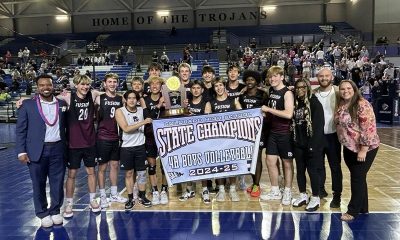
 Sports3 weeks ago
Sports3 weeks ago4A Boys Volleyball: Regis Groff Captures First State Championship
-
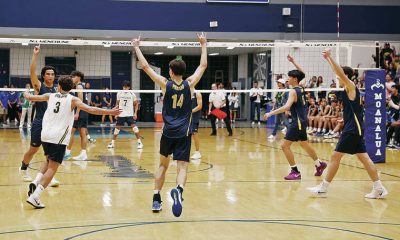
 Sports3 weeks ago
Sports3 weeks agoPunahou regains boys volleyball crown
-

 Motorsports3 weeks ago
Motorsports3 weeks agoEverything you need to know about Sunday’s NASCAR race in Kansas City
-

 Youtube3 weeks ago
Youtube3 weeks agoAaron Judge HAMMERS his 12th home run of the season!
-

 Youtube3 weeks ago
Youtube3 weeks ago10-RUN INNING: First time Yankees score 10+ in an inning since 2015
-

 Youtube3 weeks ago
Youtube3 weeks agoDeion’s reaction to Travis Hunter being drafted




































